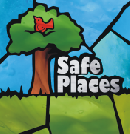
Remembering Columbine High School
April 20, 1999
April 20, 1999
Teenage shooters spilled the blood of children before Columbine - in Alaska, Arkansas, Mississippi and Oregon.
After Columbine, more blood was shed in Minnesota and California, in Germany and Finland.
The rampage at Columbine High School, where 13 people were gunned down 10 years ago today, casts a dark shadow on each of us. Eric Harris and Dylan Klebold, seniors at the suburban Denver school, detonated homemade bombs and opened fire with shotguns, a rifle and a semiautomatic handgun on April 20, 1999. They killed 12 students, injured 23 others and mortally wounded a teacher before committing suicide.
The shooting shocked the country like no other. It was the worst school shooting in American history at that time, and it came in the wake of a half-dozen others. Its shadow would stretch across the nation, and its aftermath continues to affect both law enforcement and educators today.
Marion City Schools Superintendent James Barney, who was superintendent of Old Fort Local School District in 1999 said this:
"We at that time sat down with kids, talked about what happened. We invited kids to help us be the eyes."
Barney said that, after Columbine, teachers and administrators became more sensitive to threats.
"We don't say that's just kids talking," he said. "We immediately investigate."
We must also remember Jonesboro Middle School, the shooting at Stamps, at UALR and at UCA, and the attack of a teacher at Sylvan Hills in Sherwood.
Words of a School Shooter
I just remember life not being much fun.
Reject, retard, loser.
I remember stick boy a lot, cause I was so thin.
- Barry Loukaitis, 14, Moses Lake, Washington 1996
A School Shooter's Journal Entry
I am not insane. I am angry.
I am not spoiled or lazy,
for murder is not weak and slow-witted, murder is gusty and daring....
I killed because people like me are mistreated every day....
I am malicious because I am miserable.
- Luke Woodham, Pearl Miss., 1997
School Violence: Is It Bullying Turned Tragic?
Currently in Pulaski County our local school districts seem to be seeing an epidemic of bullying behavior. Safe Places works with more than 1,000 children and youth annually, so we hear what they say and listen to their fears.
These days, we are learning that there is also a new twist to the bullying problem in our local schools. It's what we used to call "tattling" and school officials are sometimes condemning children who "tell" when they are being harassed.
And yet, "telling" is one thing we have taught our children to do in bullying prevention classes.
Bullying is a signal, a red flag. If we don't pay attention to that signal, it is likely that the bully will grow up to be the abusive adult."
- Former AMA president Robert McAfee, MD
Just how common is bullying and harassing behavior?
83% girls and 79% of boys report experiencing harassment
- Bullying, Teasing, and Sexual Harassment in School
(AAUW, 2001)
The CDC reported an average of 16.5 "school-associated homicides" annually
against "a backdrop of 55 million students enrolled in K-12."
against "a backdrop of 55 million students enrolled in K-12."
What does a parent do?
Most school districts now have an emergency response phone service where parents and guardians can be called or texted quickly if there is a situation at a school.
According to an American Red Cross press release, the Centers for Disease Control and Prevention report that U.S. schools remain relatively safe places. Among children ages 5-18 who were victims of homicide, suicide or legal intervention, less than one percent of those losses happened on school property, at school-sponsored activities, or in traveling to or from school or the activities.
Be prepared
While the chance of such an event as Columbine happening at a local school is statistically remote, the Marion County Chapter of the American Red Cross suggests that people should still take basic steps to be prepared:
- Know how you would communicate with each other during, or immediately following, an emergency. Make sure each member of the household has a current list of key names, phone numbers and addresses, including some close friends, neighbors or relatives;
- Establish a short list of locations where members of the household should meet if a crisis occurs. Work out several possibilities. Choose more than one option because some routes or entire neighborhoods ma be inaccessible under certain conditions;
- If you have school-age children, be familiar with the school's emergency procedures.
- Know whether or not they will keep children at school until a parent or designated adult can pick them up. Ask what kind of authorization may be needed to release a child to someone you designation if you cannot pick them up yourself.
- When your contact information changes, share the changes with the school.
For an online memorial and a list of school shootings, please follow this link.
If your child is being bullied and needs help, contact Safe Places at 501-374-7233 or email amcgraw@safeplaceslr.org.





